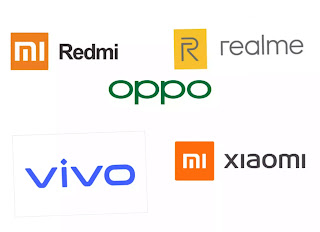Why do chinese phone companies need a second brand
Why does Xiaomi need a second brand? In fact, why do all major Chinese smartphone makers have multiple brands? So in the 39th episode of my "Story Behind" series, let's talk multi-brand smartphone strategies. [Intro] Our story begins and ends with Xiaomi. The company completely changed the Chinese smartphone market in 2011 When it launched with its crazy, online only business model that focused on cutting out the middlemen, not keeping any inventory, and selling phones with razor thin margins.Traditional phone makers like Oppo and Huawei, who have to give their offline retail partners often over 50% margins to sell their phones, simply couldn't compete with this model. Offline retail is expensive, so seeing Xiaomi's rise, they had to react. And they both came up with pretty much the same solution. Step 1: Launch an online brand which replicates most of Xiaomi's business model and offers similarly aggressive prices. After all, the Xiaomi model was innovative, but not exactly hard to copy. Step 2: Double down on offline retail with the Oppo and Huawei brands.
After all, even with Xiaomi's success, the majority of people still bought their phones offline even in China, the most e-commerce focused country in the world. Online and offline retail had to be split into two brands, because they're such wildly different businesses. It costs a lot more to sell offline, so you need higher prices. But those high prices don't work well online with competitors like Xiaomi around.
Hence, the need for two separate brands. The offline brands got the premium features first like how Vooc fast charging was on Oppo phones for two years before it arrived to OnePlus as Dash charge, or how Huawei phones got duo cameras, Bleica partnerships, and the newest Korean processors, before the honor models got them and so on. The offline brands also received much more premium marketing to turn them into fashionable, lifestyle brands all of which combined, were supposed to justify the higher price tags.
In the meanwhile, the online brands had much more bare-bones devices that focused on having the best possible price to performance ratio. Buying online, better specs nearly always win as direct comparisons are very easy to make. And this plan, worked! Xiaomi was suddenly threatened online and had nothing to fight back with offline. The meteoric rise of Xiaomi was not only stopped, the company's sales actually started shrinking. Both Oppo and Huawei overtook Xioami in China and even Xiaomi's expansion abroad, especially to Brazil and India, started faltering too. Xiaomi had to do something.
So just like the offline guys figured they could just go online, Xiaomi figured that they could just go offline. They just needed to find a way to undercut the offline brands on price significantly. Which, they did. Instead of having a separate online and offline brand like Oppo and Huawei had, they decided to stick with just one at first, and found ways to make more money outside of selling phones. Se, Oppo and Huawei make money primarily from selling phones. Xiaomi, though, doesn't. They sell phones at cost, or even at a loss, and rely on making money on internet services.
I made a whole video explaining this business model that you can see right here. And on top of that, Xiaomi stores don't only sell phones, but also lots of other items, too, like rice cookers, electric scooter thingies, power banks and so on, which a network of companies supplies them with, all under the Xiaomi brand. They make money from those too, which means that, unlike Oppo and Huawei, Xiaomi could keep their offline phone prices relatively low without hurting their online sales model too much.
This diversification really worked for Xiaomi, as they're now back to the same insane growth numbers that they had before their streak was broken. One segment that they were especially successful in is the crucially important, 10 to 20 thousand rupees segment in India, the largest smartphone market after China. This is the most important smartphone segment in India, which is why companies developed their best bang for buck devices for it, like Xiaomi's Redmi phones, Oppo's F Series phones, Nokia's newly announced 5.1 and 6.1 devices, Samsung's J Series, and many others. And so far, Xiaomi's aggressive prices, combined with their focus on both online and offline retail channels, has made the Redmi the biggest winner in it.
Which brings us to RealMe, Oppo's direct response to Redmi. Oppo, who lost significant market share in India to Xiaomi since its comeback, assigns Sky Li, formerly the head of Oppo India, to win back this crucially important segment from Xiaomi, and many of Oppo's best people were moved over there, showing not only its importance to Oppo, but also that, after spinning up OnePlus, the company has become an expert at creating new brands. Now, you might wonder, why not just have OnePlus launch a phone in this category. After all, they are supposed to be the bang for buck online brand of Oppo.
But, there are a few difficulties with that. Oneplus just isn't a budget smartphone brand anymore, as they have slowly increased their prices from around 300 USD you all the way to over 500 now. They don't want to be seen as an ultra budget phone maker anymore. They want to make a profit selling phones, and the aren't all that "online only" either. The sell through carriers in Finland and the UK, and a couple of other countries by now as well. They've also tried launching a mid-range phone, the OnePlus X a few years ago, and they themselves admitted that it wasn't well received by fans.
So, OnepLus is now focused on creating a premium flagship for enthusiasts, while RealMe can focus on beating Redmi. Which brings us to the Poco phone. My guess is that, As Ash from C4E Tech has said, Xiaomi's realized that using the same brand for both online and offline channels has, over time, started to limit Xiaomi, and that they wanted to create a device that can be ultra competitive by making it online only. They have also probably realized that Oneplus raising their prices gets Xiaomi a pretty big opening to significantly undercut them. After all, Oneplus has to make a profit from selling phones while Xiaomi doesn't.
It's clear looking at the Poco launch event that they are pitching this phone directly against Oneplus, who makes up the bulk of flagship smartphone sales together with Samsung in India, and who is growing very quickly, giving Xiaomi a real headache. If things go well, Poco will be to Xiaomi what OnePlus is to Oppo, an even more competitive, even more bang for buck brand for enthusiasts. Launching multiple brands gives a company the ability to target completely different users that wouldn't be available to them if they only had one brand. Just think of Oppo and OnePlus.
Hardcore smartphone enthusiasts tend to sneer at Oppo's selfie campaigns, while people who love fashion and luxury would probably want to have something more fancy than a OnePlus. Having both lets Oppo reach both groups. And, as the smartphone market matures, I totally expect to see more multi-brand companies in the future, just like we've seen in other consumer facing industries like cars and clothes as well.
Fun fact: Did you know that OnePlus didn't own the oneplus.com domain name until about a year or two ago? They only had oneplus.net, which is a pretty nasty problem for a company who sells phones primarily through their website. If you want to launch your own website, blog or webshop, be smarter than Oneplus.
Get the right domain and build it using Squarespace. They have an easy drag-and-drop UI so you don't need to code if you don't want to, 24/7 customer support for when you screw up something in the middle of the night, beautiful templates built by world-class designers, analytics, hosting, domain services, it's all there. And you'll never have to patch or upgrade anything. Go to squarespace.com/techaltar to get 10% off your first purchase of a website or domain and to help my channel out as well while you're at it.



